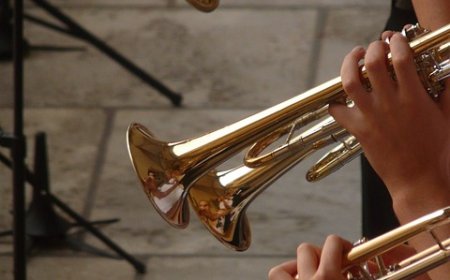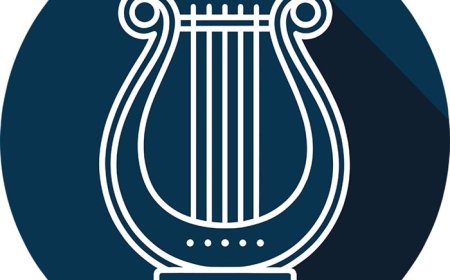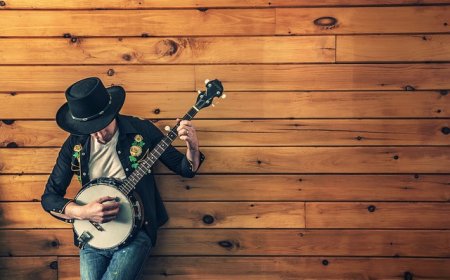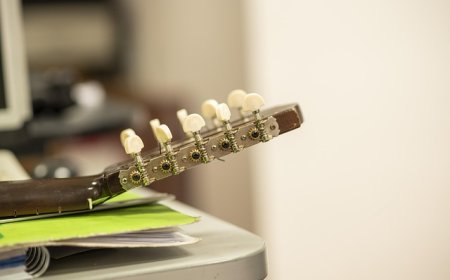Viola Facts for Students | Learn About the Viola and Its Role in the Orchestra
Discover the viola—an important string instrument with a rich, mellow sound. Learn about its parts, how it works, famous players, and why it’s essential in music.
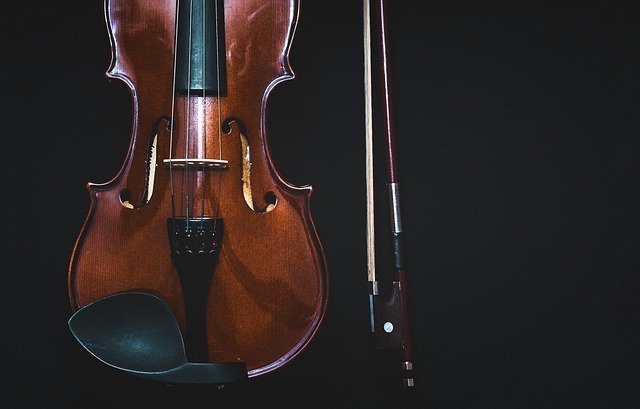
🎻 All About the Viola
🥇 Introduction
The viola is a beautiful, wooden string instrument that looks like a larger violin-but with a deeper and more mellow sound. It plays the middle range in string music, giving warmth and harmony to orchestras, string quartets, and solos. Although the viola doesn't always take the spotlight, it's essential to creating the rich textures of classical and modern music. Playing the viola takes skill, control, and a great sense of musical teamwork.
🎶 What Is a Viola?
A viola is a bowed string instrument with four strings, similar to the violin but slightly larger and tuned lower. While the violin plays in the soprano range, the viola plays in the alto range, filling in the musical space between the violin and cello.
The viola is played on the shoulder, just like the violin, but because it's a bit bigger and heavier, it often requires a different playing technique and posture. Its tone is described as warm, rich, and slightly darker than the violin, making it ideal for playing harmony and expressive melodies.
🧩 Parts of the Viola
The viola shares many of the same parts as the violin but is built slightly larger to create lower tones:
-
Body - The hollow wooden frame that resonates the sound
-
Strings - Four strings (C, G, D, A), tuned a fifth lower than a violin
-
Fingerboard - Where the player presses down the strings to change pitch
-
Bow - A wooden stick strung with horsehair, drawn across the strings
-
Bridge - A curved piece of wood that holds the strings above the body
-
F-holes - Openings that let the sound out of the instrument
-
Scroll - The decorative top end of the neck
-
Tuning Pegs - For adjusting string tension and pitch
-
Chin Rest - Helps players hold the instrument comfortably under the chin
-
Fine Tuners - Small screws used for fine pitch adjustments
⚙️ How Does the Viola Work?
The viola makes sound through friction and vibration. When a player draws the bow across a string, it causes the string to vibrate. These vibrations pass through the bridge to the body, which amplifies the sound. The shape and size of the viola give it a darker, fuller tone than a violin.
The left hand changes pitch by pressing down on the strings, while the right hand controls the bow to create different articulations and dynamics. Viola players can also pluck the strings (pizzicato) or use special effects like tremolo and harmonics.
📜 History of the Viola
The viola was developed in Italy during the 1500s, alongside the violin and cello. In early orchestras, the viola played a supporting role, adding depth and harmony to the string section.
During the Baroque and Classical periods, composers began writing more complex parts for the viola. Over time, it became a standard member of:
-
Orchestras
-
String quartets
-
Solo music and concertos
The viola was often overlooked for the flashier violin, but in the 20th century, more composers and performers began to showcase its unique voice. Today, the viola is essential in all kinds of music-from classical to film scores to experimental music.
🥁 Famous Viola Players
Although not always in the spotlight, many great musicians have made the viola their voice:
-
Lionel Tertis - One of the first viola soloists and composers
-
William Primrose - Scottish violist who helped bring the instrument to the concert stage
-
Kim Kashkashian - Known for emotional and expressive viola playing
-
Tabea Zimmermann - A modern virtuoso celebrated for solo and chamber music
-
Paul Hindemith - Composer and violist who wrote many pieces for the viola
-
Milt Jackson (early career) - Jazz musician who briefly played viola before vibraphone
-
Jimi Hendrix (in school) - Played viola before switching to guitar!
🎶 Learning to Play the Viola
Learning to play the viola builds many important skills:
-
Reading alto clef (a special music staff used mostly for viola)
-
Using smooth bow strokes and control
-
Playing harmony and supporting melodies
-
Blending with other instruments in groups and ensembles
-
Developing strength and finger spacing for the larger instrument
Many students start with violin and move to viola as they grow older, but some start on viola right away. It's a great choice for team players who love rich, beautiful tones.
😄 Fun Facts About the Viola
-
The viola reads music in alto clef, which is used almost nowhere else!
-
It's about 1 to 4 inches longer than a violin.
-
The C string gives the viola its deep, mellow sound.
-
Some famous violinists, like Yehudi Menuhin, loved playing viola in quartets.
-
There's a long tradition of viola jokes in classical music-because violists often play harmony, not melody.
-
Viola concertos were rare until the 20th century, but now there are many!
👧 Kid-Friendly Summary
The viola is a bigger, deeper version of the violin. It has four strings and makes warm, rich sounds. You play it with a bow on your shoulder, just like the violin. The viola is great at playing harmony and smooth melodies, and it's an important part of any orchestra or string group!
📚 Vocabulary Words
Viola – A string instrument slightly larger and deeper than the violin
Alto Clef – A music staff mostly used for viola music
Bow – A stick with horsehair used to play string instruments
C String – The lowest string on the viola
Resonance – The way sound vibrates and echoes inside the instrument
Harmony – Notes that support and blend with the main melody
Pizzicato – A way of playing by plucking the string
Fingerboard – The part where fingers press the strings to change notes
❓ Interactive Quiz (8 Questions)
1. What is the main difference between the viola and violin?
A. Viola is played sideways
B. Viola is smaller
C. Viola is larger and sounds deeper
D. Viola has six strings
2. How many strings does a viola have?
A. Three
B. Four
C. Five
D. Six
3. What is the lowest string on the viola?
A. E
B. G
C. D
D. C
4. What kind of clef does the viola usually read music in?
A. Treble
B. Bass
C. Alto
D. Tenor
5. What do you use to play a viola?
A. Stick
B. Mallet
C. Bow
D. Pick
6. Which word describes the viola’s sound?
A. Shrill
B. Mellow
C. Tinny
D. Booming
7. Who was one of the first viola soloists?
A. J.S. Bach
B. Lionel Tertis
C. Beethoven
D. Paganini
8. In what country was the viola first developed?
A. Germany
B. France
C. England
D. Italy


















































